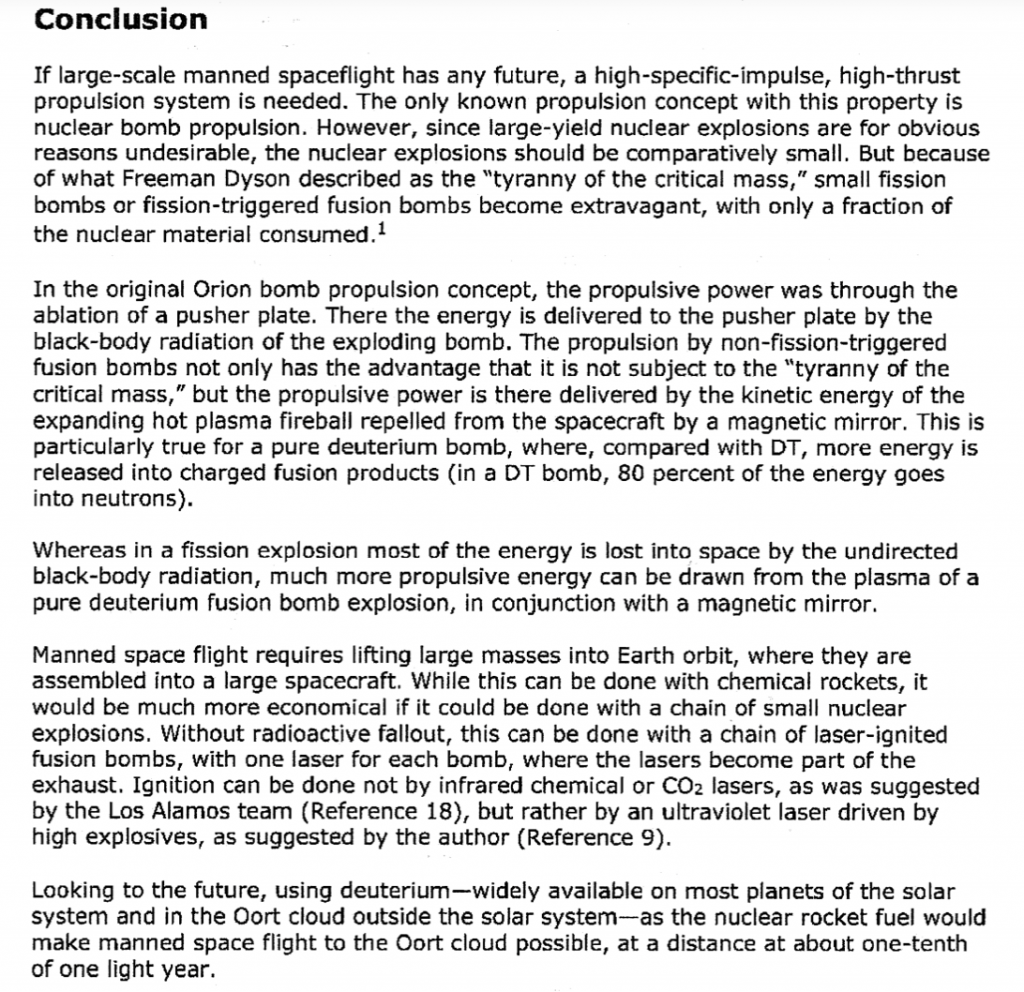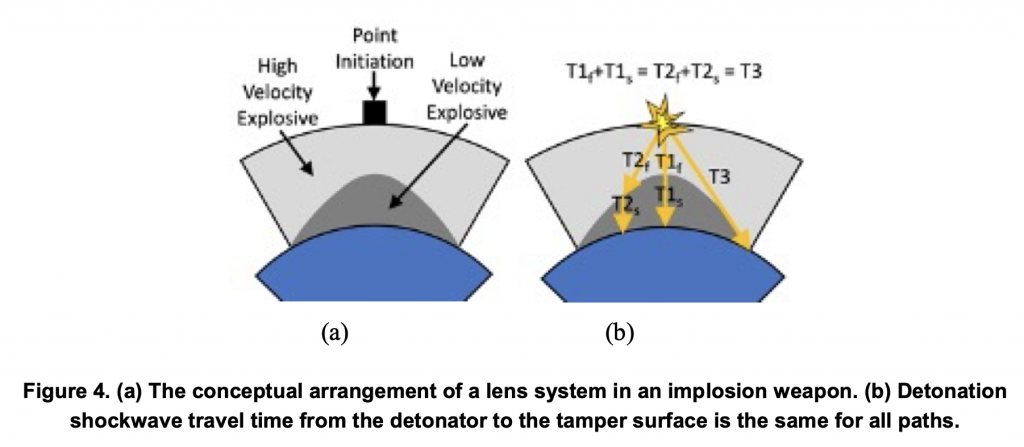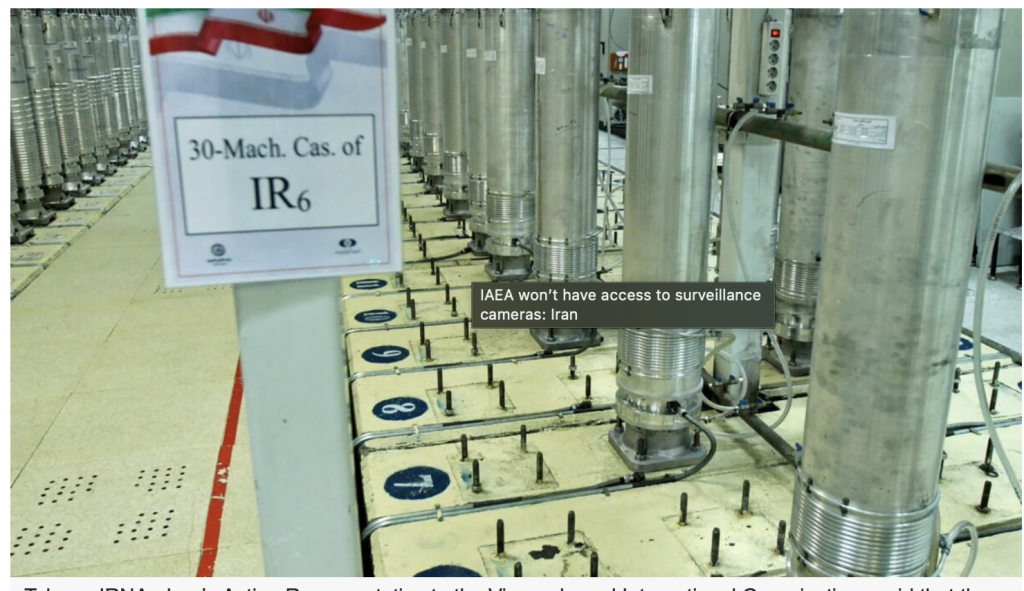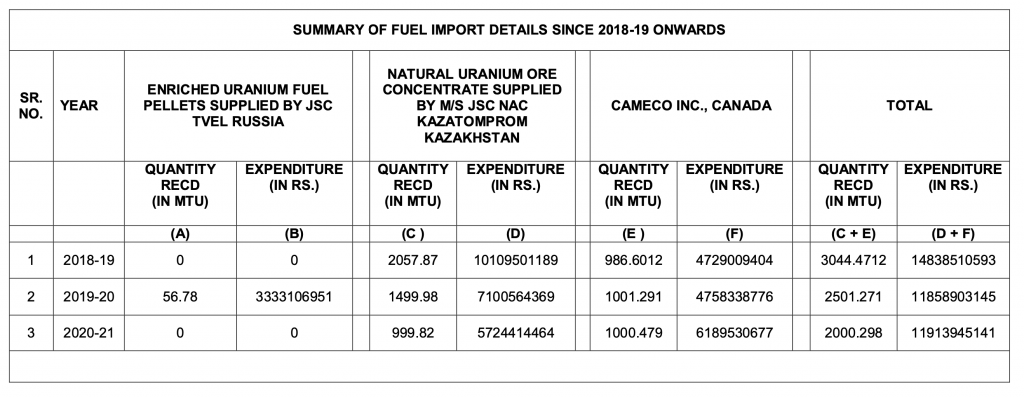Take a look at this 2010 DIA document.


Take a look at this 2010 DIA document.

If you want a primer on implosion, here’s a handy one from LANL:
This article is set during the 1944 and 1945 final push to complete Project Y—the Manhattan Project at Los Alamos—and focuses primarily on overcoming the challenge of creating and demonstrating a successful convergent explosive implosion to turn a subcritical quantity of plutonium into a critical mass. The critical mass would then efficiently yield kilotons of trinitrotoluene (TNT)-equivalent energy in about a microsecond, demonstrating the implosion atomic bomb concept. This work culminated in the Trinity atomic test near Alamogordo on July 16, 1945.

Here’s what DAE told the Lok Sabha this past March:
Uranium fuel requirement for the reactors which are not covered under the International Atomic Energy Agency (IAEA) safeguards is adequately met by Uranium Corporation of India Limited (UCIL), aPublic Sector Enterprise under the Department of Atomic Energy (DAE). Time to time, projects which include capacity expansion of some of existing units as well as for establishing new projects in various parts of the country, are planned for maintaining sustained supply.
Regarding fuel supply for Pressurized Heavy Water Reactors (PHWRs) which are under IAEA safeguards, a strategic reserve of imported natural uranium is maintained for enabling uninterrupted supply of fuel. Fuel for Boiling Water Reactors (BWRs) and water-water energetic reactor (VVERs) is met from the imports from Russia
More from this 1987 interview with Agha Ibrahim Akram:
WHAT WAS YOUR PERSONAL REACTION TO THE NEWS… THAT THE INDIANS HAD EXPLODED A NUCLEAR DEVICE?
My reaction personally was the same as the national reaction. I think all Pakistanis talked alike on this issue that India has stolen a match, and there’s a positive danger of the Indians eventually becoming a nuclear power. We could see the euphoria in India. The Indians went mad with joy. “Wonderful! We made — we had a nuclear explosion. We’re entering the nuclear club.” Indira Gandhi was regarded as a deity, as a goddess. She had done it. Wasn’t that marvelous? And of course her whole idea was to get political advantage. But the feeling here was there’s no such thing as a peaceful nuclear explosion. This is the first step that India has taken towards becoming a nuclear power and we have to do something about it, to have the capability of responding. Until ’74 — we had never thought much of nuclear matters except as generating electricity in Karachi or places like that, purely for some uses and so on. We never thought of it as an important factor of strategic implication in South Asia. After the ’74 explosion at Bukhara in India. We suddenly realized that warfare from now on might not be as simple and as, as a gentlemen’s war as in the past. It had been a gentlemen’s war with India and Pakistan. We suddenly realized that there was a nuclear angle to it too. And the feeling was that it’ll never be the same again, that we don’t want to make the bomb but we have to have the capability of responding to India. But with this was a strong link and that was the Yom Kippur war of ’73. Because of it the oil prices shot up and in ’74 the effect of that was felt at almost the same time as the explosion, that we suddenly found that more than half our foreign exchange earnings were being spent in importing petroleum. It wasn’t so before that but with the rise in… the explosion of oil prices we suddenly realized that we had to have other forms of energy. So the requirement of nuclear energy for electricity, for power and the danger of the… or the threat from India who had just exploded the, the nuclear device combined together to, to, to make us, make us feel, to make us feel determined that we must go ahead and have a sizeable nuclear program for the production of energy, basically for energy but which might have the capability of stopping India also from going nuclear. ’74 was a watershed. It brought the shadow of the bomb to South Asia and that shadow is still there.
Agha Ibrahim Akram gave this interview in 1987.
THE TIME THE NON-PROLIFERATION TREATY DEBATE WAS GOING ON IN NEW YORK AND IN GENEVA. WHAT WAS PAKISTAN’S ROLE IN THAT AND WHAT WAS ITS FINAL CONCLUSION?
Akram:We — I don’t think it became to a very clear cut policy on the NPT for some years because we’re not quite sure of its implications for Pakistan. We became more conscious of the NPT in 1974 to which we’ll come again a little later but basically I don’t think we had given very much thought to the NPT, its implications, its pros and cons in Pakistan. We were actually — didn’t know enough about the consequences of the NPT to take a very firm decision. We took it later on in ’74 when India had the explosion but we’ll come to that a little later.
DO YOU WANT TO SAY THE MAIN REASONS FOR PAKISTAN NOT SIGNING?
Well basically our main… One main reason for not signing was that India did not sign it. If India were to sign it we would. We would now offer to India that if they will sign it we will. We’ve said let’s jointly sign the NPT. We’ve even said let’s have a special South Asian NPT. We don’t like the idea of signing the NPT because we don’t agree with the American policies or British policies. Let’s have a South Asian NPT. We didn’t sign it beca
Not sure this is new, but it nevertheless depicts IR-6 centrifuges:

Here’s a list of Intelligence Community Annual Worldwide Threat Assessments.

DAE in a recent Lok Sabah session:
the details of combined energy generation capacity of the operational nuclear power plants and the percentage of their overall energy supply contribution in the country;
There are presently 22 reactors with a total capacity of 6780 MW in operation and one reactor, KAPP-3 (700 MW) has been connected to the grid on January 10, 2021. There are 10 reactors [including 500 MW Prototype Fast Breeder Reactor(PFBR) being implemented by Bharatiya Nabhikiya Vidyut Nigam Ltd. (BHAVINI) totaling to 8000 MW under construction at various stages and the Government has accorded administrative approval and financial sanction for construction of 10 more reactors totaling to 7000 MW, to be set up in fleet mode. The projects under construction and accorded sanction are expected to be completed progressively by 2031. More nuclear power plants are also planned in future.
This December 2021 report t from India’s DAE to the Lokh Sabah has this chart about India’s uranium imports:

The March 18 press briefing from Pakistan’s Foreign Ministry contained a good summary of Islamabad’s portion concerning the March 9 launch of an Indian missile into Pakistan:
I am sure you have followed closely the grave incident of unprovoked and flagrant violation of Pakistan’s airspace by an Indian supersonic missile that fell to ground near Mian Channu causing damage to civilian property on 9 March 2022.
The flight path of the missile also endangered many international and domestic commercial flights both in Indian and Pakistani airspace as well as human life and property on ground.
You are aware of the briefing by DG ISPR and DGPR PAF of 10 March, and the summoning of the Indian Charge d’Affaires (Cd’A) on 10th March to convey our strong protest. On 11 March, Indian Press Information Bureau’s Defence Wing issued a statement admitting that a missile was ‘accidently’ launched from India due to ‘technical malfunction’ during the course of a ‘routine maintenance’. Taking note of that statement, the Ministry issued a Press Release on 12 March in which questions were raised regarding India’s security protocols and technical safeguards against accidental or unauthorized launch of missiles in a nuclearized environment. The Indian CdA was again called in that day and formally conveyed the Government of Pakistan’s serious concerns on the Indian press statement. A demarche was also handed over.
The grave nature of the incident raises several fundamental questions regarding security protocols and technical safeguards against accidental or unauthorized launch of missiles in a nuclearized environment.
Therefore such a serious matter cannot be addressed with simplistic explanations proffered by the Indian authorities.
Some of the questions that need to be answered include:
• India must explain the measures and procedures in place to prevent accidental missile launches and the particular circumstances of this incident.
• India needs to clearly explain the type and specifications of the missile that fell in Pakistani territory.
• India also needs to explain the flight path/trajectory of the accidently launched missile and how it ultimately turned and entered into Pakistan?
• Was the missile equipped with self-destruct mechanism? Why did it fail to actualize?
• Are Indian missiles kept primed for launch even under routine maintenance?
• Why did India fail to immediately inform Pakistan about accidental launch of the missile and waited to acknowledge till after Pakistan announced the incident and sought clarification?
• Given the profound level of incompetence, India needs to explain if the missile was indeed handled by its armed forces or some rogue elements?
We believe that the whole incident indicates many loopholes and technical lapses of serious nature in Indian handling of strategic weapons. Indian decision to hold an internal court of inquiry is not sufficient since the missile ended up in Pakistani territory. Pakistan has demanded a joint probe to accurately establish the facts surrounding the incident.
Given the short distances and response times, any misinterpretation by the other side could lead to counter measures in self-defence with grave consequences. Pakistan, therefore, calls upon the international community to take serious notice of this incident of grave nature in a nuclearized environment and play its due role in upholding and promoting strategic stability in the region.
Let me inform that Pakistan has briefed the P-5, European and other countries on this matter. The Foreign Minister has also spoken to UN Secretary-General and also addressed a letter to the President of the UN Security Council and the Secretary-General on 14th March on this incident.
The letter also draws attention to India’s persistent aggressive and irresponsible actions, its massive arms build-up as well as its offensive military doctrines and force postures, which pose an ever-present threat to peace, security and stability in South Asia. It also calls upon the Security Council to demand from the Government of India to: (a) hold a joint investigation into the missile incident along with Pakistan to accurately establish the facts surrounding the incident; (b) desist from any further actions that would jeopardize regional peace and security; and (c) take measures to provide reassurances to Pakistan and the world community about the security and safety of India’s weapons systems and the credibility of its command and control systems.